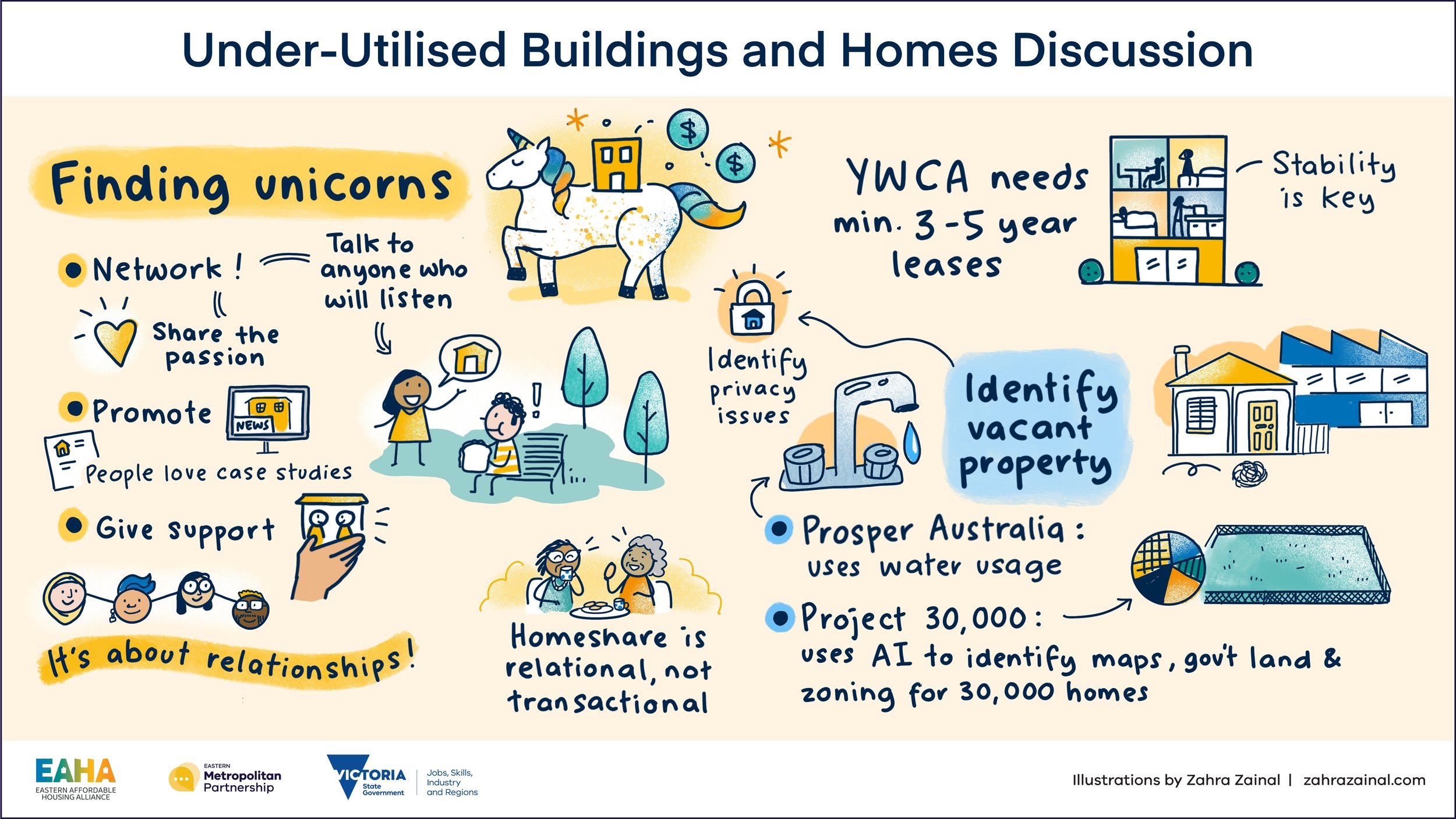Preventing Homelessness Among Older Women Research Project
The Eastern Affordable Housing Alliance (EAHA) has completed a 12-month research project on Preventing Homelessness among Older Women and the final report is now available with key findings and local solutions.
The project has been delivered by the EAHA councils including Knox City Council (project lead) and supported by $180,000 in funding from the Victorian Government’s Metropolitan Partnerships Development Fund.
The research is a vital piece of work. Single women over 55 are the fastest growing group of people experiencing homelessness in the eastern metropolitan region (and Australia). The report highlights the local impact, those most at risk and ways to address the issue.
The research project included speaking with women in the region who have experienced homelessness as well as service providers to gain insights and find practical, local solutions. A total of 120 participants were involved in the research through interviews, surveys and focus groups, conducted by Umwelt Consultants.
The project explored factors contributing to women’s homelessness in the region and identified service gaps and key stages of early intervention to prevent homelessness. The research identified a number of solutions with key recommendations around: using under-utilised homes and buildings; and including affordable housing in retirement villages and independent living units.
Solutions
Using Under-utilised Homes and Buildings
Approximately 64,000 properties are left vacant in Victoria each year; enough to house over 185,000 people (Prosper Australia, 2019). A total of 75% of Australians aged over 65 have a spare bedroom (James et al. 2020).
Recommendations include: Advocating for funding to support a home sharing pilot project; exploring the possibility of granny flats for non-dependent residents; supporting building owners to provide temporary crisis accommodation; and collaborating with State Government to establish a housing portal to generate ideas and solutions.
Affordable housing in Retirement Villages and Independent Living Units
There are 476 retirement villages in Victoria. There are opportunities to encourage not-for-profit retirement village models and to encourage for-profit organisations to include affordable options.
Recommendations include: Identifying existing council-owned land or buildings with the capacity to host affordable retirement village-style housing for older women, partnering with a not-for-profit housing provider and applying for State Government funding; negotiating for affordable retirement homes within retirement villages at the planning application stage; and identifying where existing ageing retirement villages may become available for affordable independent living units.
The project findings inform all levels of government about preventive approaches, solutions and alternative housing models for women over 55 that could be delivered locally and across the eastern region.
Phase One Report
From November 2022 to July 2023, the project mapped the prevalence of older women at risk of homelessness across the region and the services that support them. Across interviews, surveys and focus groups with over 90 participants the research focused on what it’s like to seek and deliver housing and homelessness support in Melbourne’s east, what it’s like to experience housing stress and homelessness and what we should be doing to resolve the growing prevalence of homelessness among older women.
The findings and proposed solutions arising from this first phase of research are presented in the Phase One Report.
Graphic Recordings
We’re pleased to share the key learnings from Phase One captured in seven graphic illustrations (link below) by the talented Zarah Zainal (Graphic Recorder and Thought Visualiser).
Sign up to the EAHA Mailing List to stay informed about this research project.
Homelessness Week 2023 - PHOW Presentation
Project leader researcher, Dr Katrina Raynor (Principal Social Consultant, Umwelt), presented on the Phase One research findings and outlined the direction for Phase Two.


